There seem to be two kinds of small daysailers. One kind keeps the water as far away from her crew as possible for her given size. These boats have high sides. The crew sits inside, to be insulated from the elements. I think of them as cozy, happy boats.
The other kind assumes that the crew will be more intimate with the water and puts them very close to it. The crews of these boats are in the action, and of the action, in close contact with wind and waves and boat. They’re an integral part of the workings of the structure. These boats have low sides, with lots of deck to keep the water out. I like all kinds of boats. But these are the exciting ones for anyone who loves sailing.
The Ipswich Bay 18 falls into the latter camp, though not so much that bathing suits are required. Like the Snipes, Comets, and Lightnings that I grew up with, she’s low-sided with lots of deck and a footwell rather than a cockpit with seats. That makes her lighter, of course, and easier to build. It also puts her crew close to wind and waves, which makes even a short evening sail on a small lake feel like a vacation.
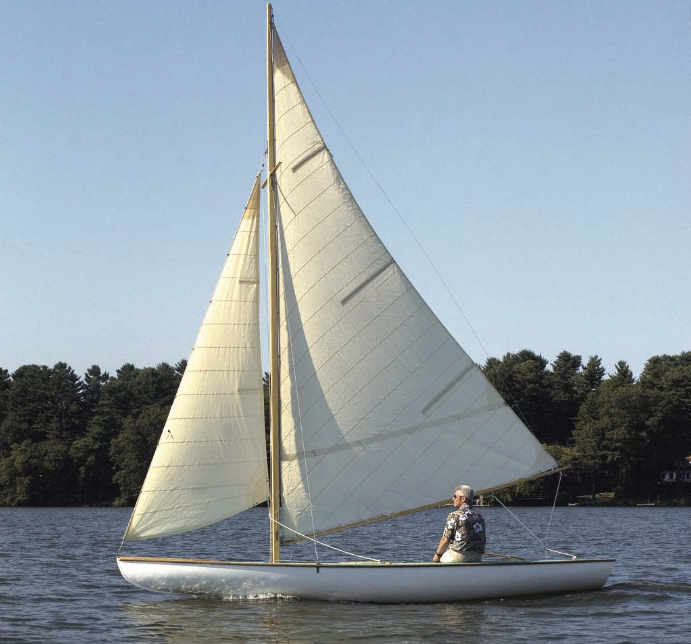 Photo by Vernon Doucette
Photo by Vernon DoucetteThe Ipswich Bay 18 is a decked sailing dory reminiscent of the small racing boats of the Massachusetts North Shore of the first half of the 20th century.
Small boats like this seem so simple. But, of course, the simplest boats are the hardest to design and the easiest to get wrong. The IB 18 worked out just fine. She sails with great drama but little worry, depending on your mood. She’s essentially a short, flat-bottomed scow—only 12 1⁄2′ waterline length—with a long, broad, overhanging stern and a longer spoon bow. The broad, flat stern gives her all kinds of stability and makes her somewhat more forgiving of fore-and-aft trim (though you want to be careful of dragging the transom), and the long bow keeps her dry and buoyant and provides her a reasonable turn of speed. These kinds of boats used to be fairly common among development race classes, including the Massachusetts Bay waterline classes on the North Shore. Those boats provided much of the inspiration for Dan Noyes when he designed the IB 18. There’s also a little Alden Indian (a highly refined one-design dory) in her sheerline and some Town Class (another decked dory, still popular in Marblehead) in her hull shape. Dan Noyes would like to see her become a new North Shore one-design class.
The family resemblance to all these boats, especially the waterline classes, bodes well for the IB 18. The early North Shore racing boats also grew into a whole series of Inland Lake Scows, though they have squared-off bows. Boats like this can be very fast; I remember water-skiing behind a 28′ E-scow in a lake in northern Michigan when I was 11 or so. Dan Noyes reports that the IB 18 planes easily in a breeze. That’s easy to believe, and I look forward to getting her out soon in more than the 8–10 knots that I had to play with.
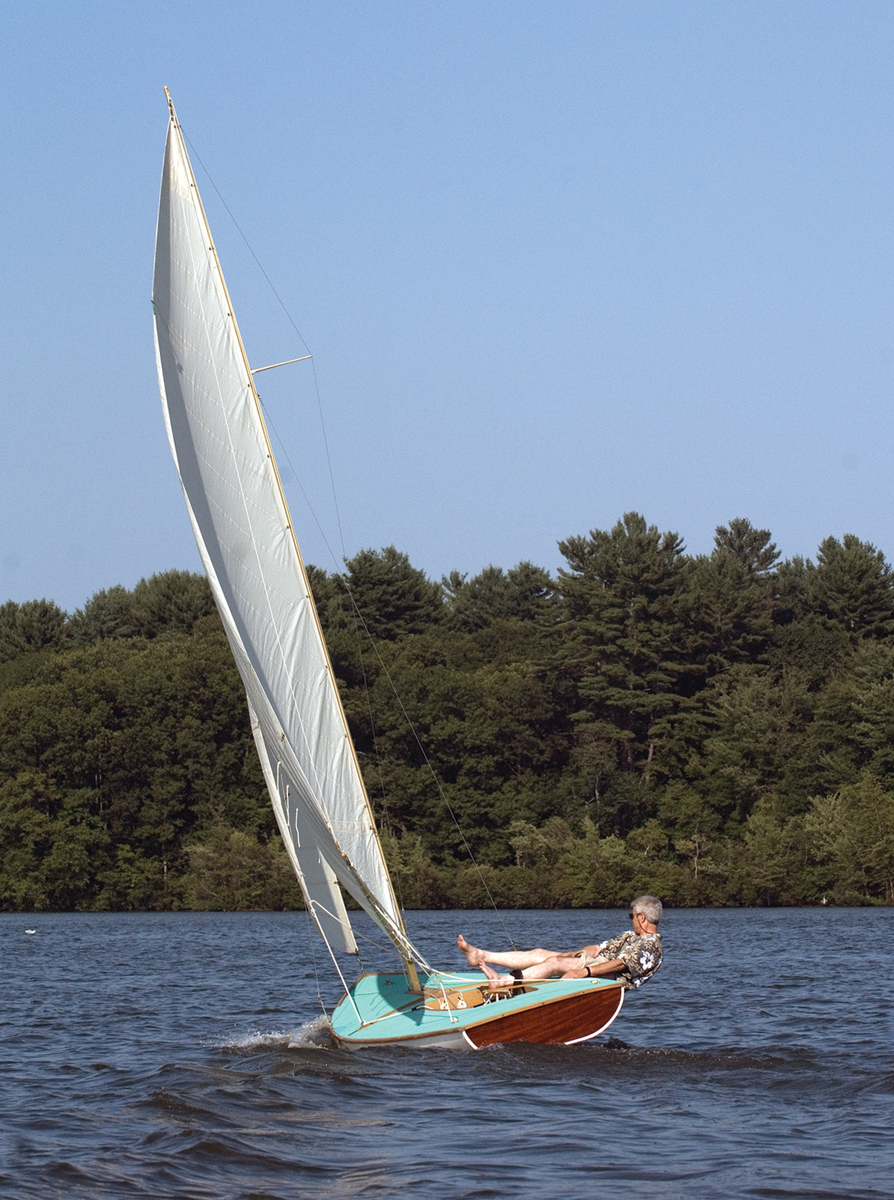 Photo by Vernon Doucette
Photo by Vernon DoucetteThe IB 18 is, essentially, a flat-bottomed scow-shaped hull with firm, round bilges. She’ll lean on those bilges in a breeze, giving the boat good stability.
Even in the light breeze I had, she was great fun. She has lots of sail area in a huge main on a 21′ mast and a very small jib, 145 sq ft in all, on a hull that weighs 360 lbs. But the main’s not so large that the sheet is ever hard to handle: ease it a fraction of an inch at a time to depower, or drag it in under the snubbing cleat on the centerboard trunk for a little more action—and the jib, sheeted to open cam cleats, can be handled almost as an afterthought. With her wide decks there’s nothing in the way. Lie down if that’s the mood of the afternoon, or rig hiking straps and get your weight outboard and power her up.
With little distance between centerboard and balanced rudder, and her flat bottom, she spins within her length, but still steers easily and precisely. Just a thumb and forefinger are needed on the hiking stick—very sporty. Yet surprisingly, she tracks quite well, enough so that the tiller can be clamped under a buttock to leave both hands free.
Alone, in 6–8 knots of air, hiked out flat and main fully powered up, you can get moving fast with her rail almost down, her centerboard trunk spitting just a little, and her stern wave just starting to separate from the transom. She sails like a thoroughbred. But you don’t have to work that hard. Ease the sheet just a fraction and relax. Few boats are this versatile. Part of the versatility comes from the weight of the hull, coupled with her flat and heavy bottom. The boat is heavy enough that she reacts slowly to crew weight. She nods rather than lurches when a person walks around on her decks. She weighs about double what a full-grown crew member might weigh. That means the crew contribute to her motion—or stability—instead of dominate it. With two people on board and an 8–10 knot breeze, I doubt that anyone would have to worry about spilling beer on the deck. The first reef would go in at about 12–15 knots of air. But in any kind of a real breeze, given appropriate sea conditions, I doubt she’d ever make a reasonably experienced crew nervous.
In a chop, I suspect she’d be fastest to windward heeled well over, like a scow. With her broad beam, it doesn’t take much heel to start her centerboard coming out of the water. If I were to have an IB 18, I might consider bilge boards instead of a centerboard to keep more foil in the water at a greater angle of heel. That would get the centerboard out of the way of the crew, too. It would also be tempting to put the rudder (or rudders, if we gave in to bilge boards) in a trunk. That would make building the boat harder, but launching and trailering easier and safer.
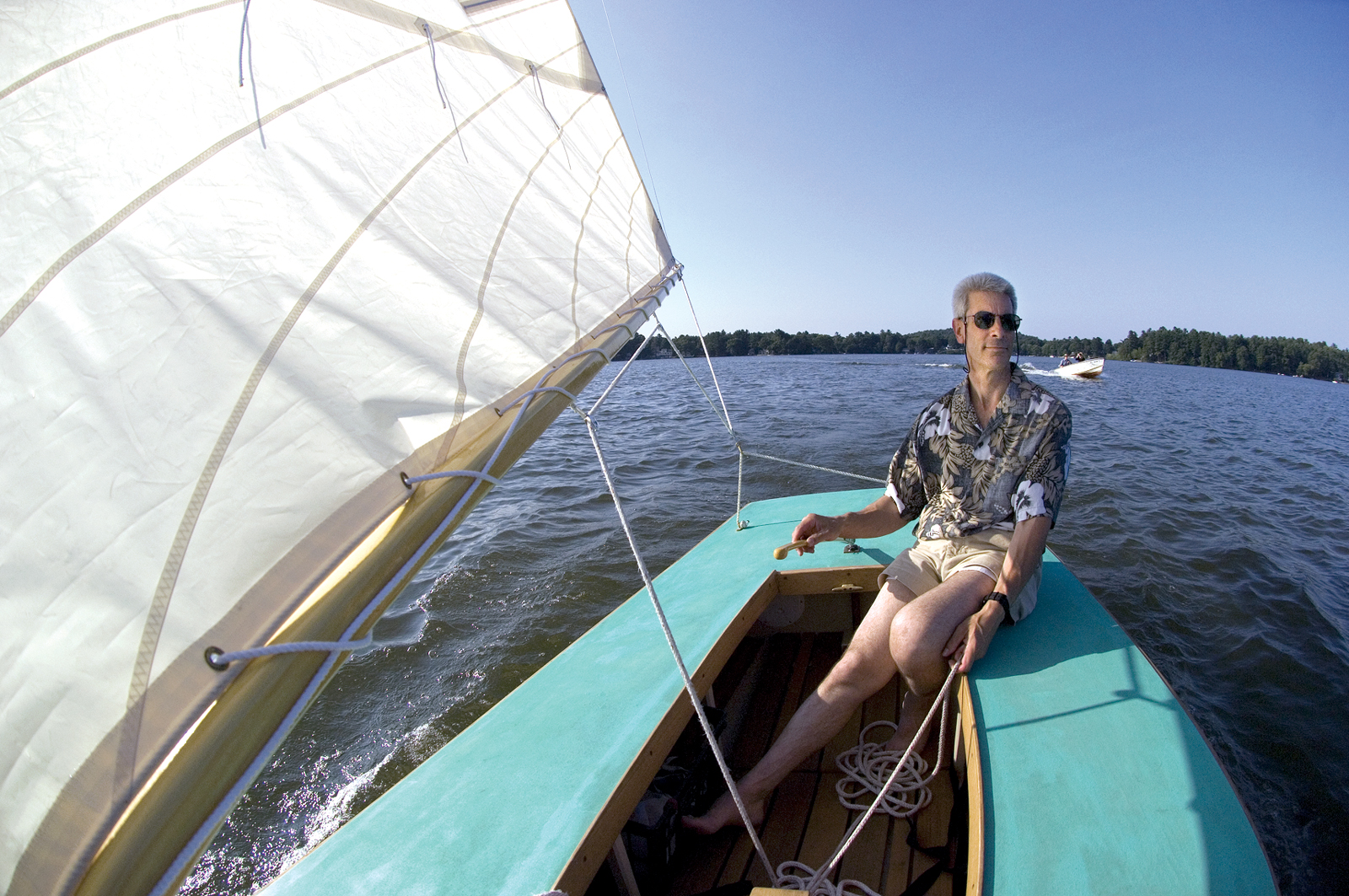 Photo by Vernon Doucette
Photo by Vernon DoucetteThe wide side decks and footwell cockpit allow for quick hiking in a gust. This is an exciting solo boat that can carry two or three passengers, too.
Although the IB 18 looks like she’s all deck, the footwell is over 6′ long, and plenty wide enough to keep from banging knees with the person sitting opposite. I’ve always found wide decks like this very comfortable, with lots of lounging space, room to walk around during a longer sail, plenty of space under deck for dry stowage. On quiet days, canoe seats can provide back support; on more exciting days there’s nothing to get in the way of hiking.
Daniel Noyes is an industrial designer by training. He understands the art of matching structure to function, and the importance of making the building process fit the end product. He also understands boats. He spent summers in college working in aerospace composite materials, including vacuum-bagging foam-cored high-performance daysailers and raceboats. But he loves traditional boats as well. He put in six years building dories at the Lowell Boat Shop, and at the Pert Lowell Company—state-of-the-art industrial production shops in their day—before designing and building the IB 18.
Impressed with the logic and simplicity of dory building techniques, Noyes adapted them to the wood-composite hull. Dories are production-built boats. The IB 18 was developed to make it faster for a professional to build a series of hulls, or easier for a reasonably experienced home builder.
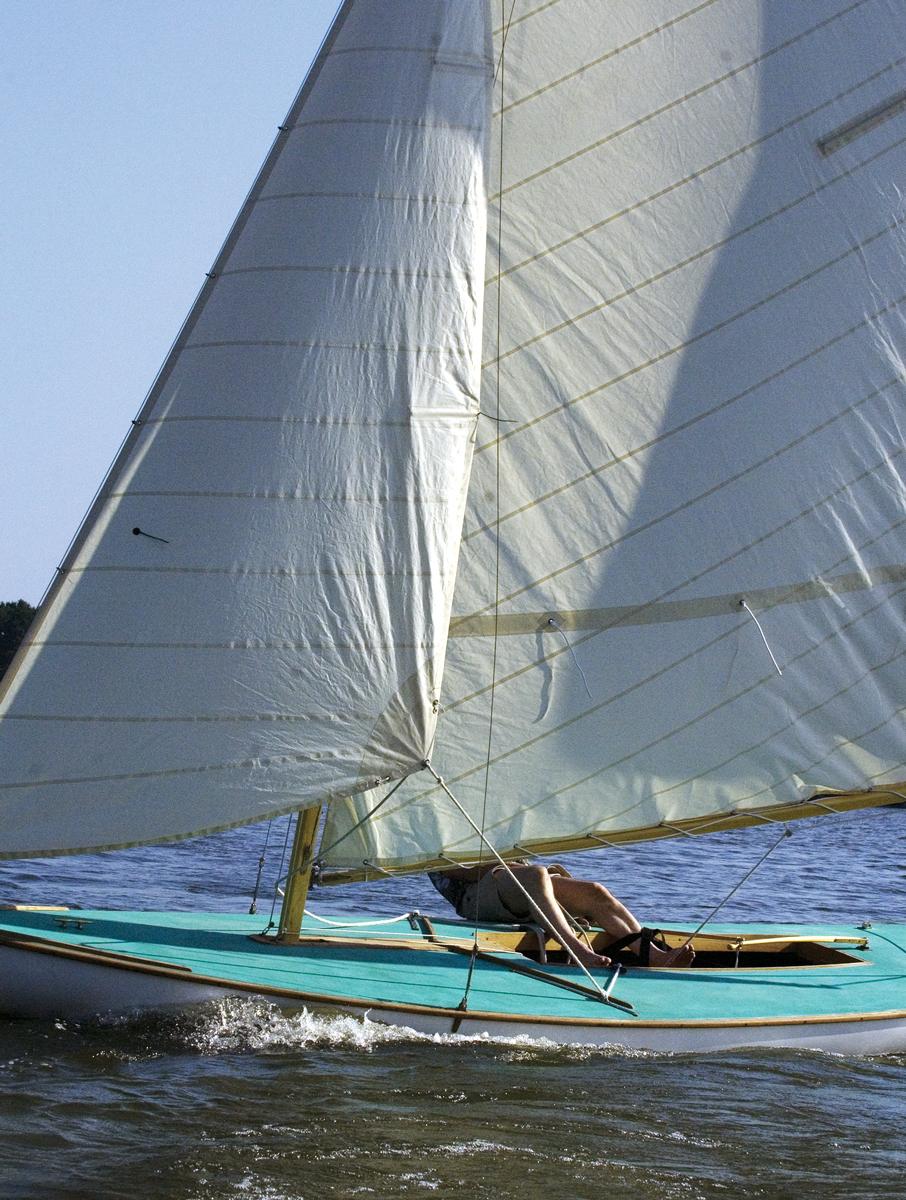 Photo by Vernon Doucette
Photo by Vernon DoucetteClose to the water. Author Dan Segal, at the helm, says the IB 18 reminds him of such noted one designs as the Comet, Snipe, and Lightning.
Being “dory built,” the boat requires no full-sized lofting. Instead, patterns and a batten are used. All the hull molds share the same pattern, and the same 12 1⁄2-degree radius, and all the topside planks are ripped to the same 3-degree bevel. The hull is built upright on a strongback using pre-cut temporary half-molds to lay the planking against. Noyes says that it took him about an hour to cut out the sixteen molds needed.
As one would expect, the IB 18 is an interesting mix of traditional and more modern materials. The bottom is 3⁄4″ marine plywood. The topsides are strip-planked cedar. The deck, 3⁄8-inch marine ply, is canvas covered and painted, just like those boats I grew up with. Unlike those boats, there are plywood bulkheads bow and stern to create flotation tanks.
She is built from the bottom up. Half-widths are marked on the plywood, and the side shape faired with the batten. The temporary half-molds are overlapped and placed port and starboard to the edge of the bottom, then bolted in place. The transom and stem are hung. The bottom is bent to the predetermined rocker on the strongback (called a bed in the dory world). The planks are hung from the garboard up and epoxy glued. The bulkheads are added to the open hull, then sheer clamps, deck beams, and the centerboard trunk. Next the plywood deck is cut out, nailed and glued down, and epoxy-coated. The deck edge is then trimmed, in the standard manner. Noyes will sell finished boats, hulls, or parts. He also has building plans and pattern tracings available for amateur construction.

The Ipswich Bay 18 is built of plywood and cedar strips— materials readily available to the amateur builder. The boat will ride easily on a trailer, and will be easily stored in a modest garage.
This Boat Profile was published in Small Boats 2008 and appears here as archival material. If you have more information about this boat, plan or design – please let us know in the comment section.
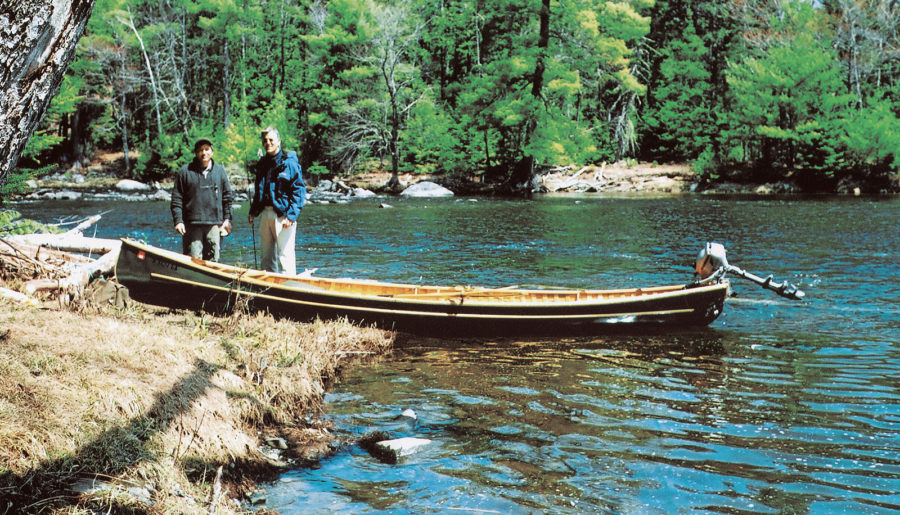
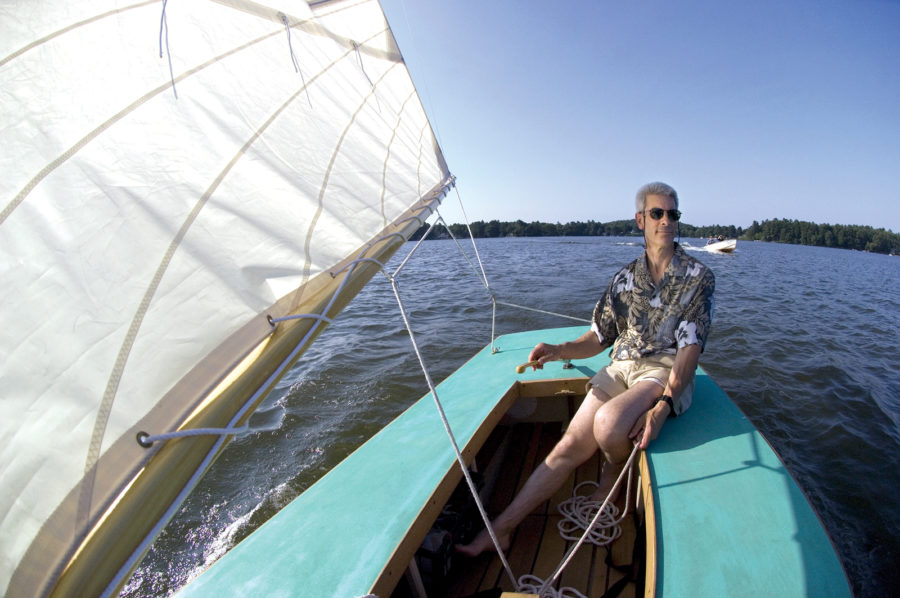
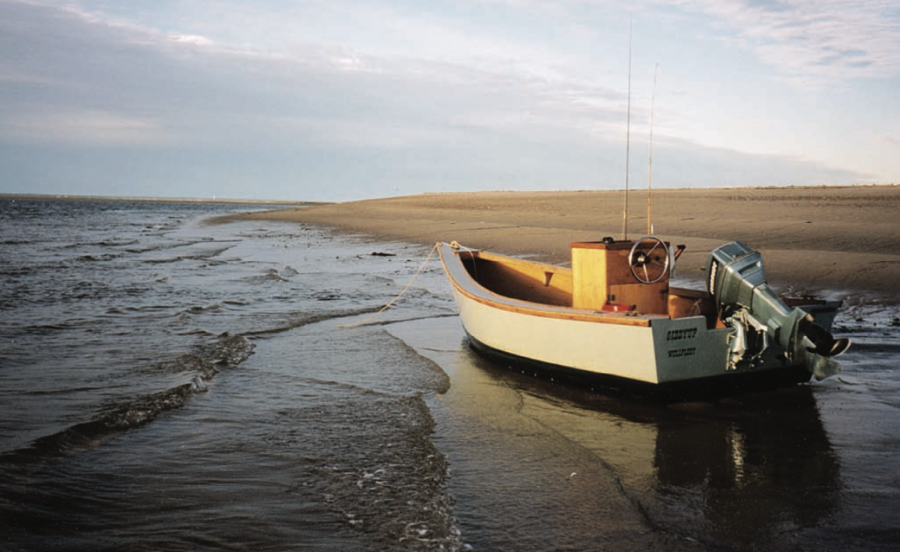
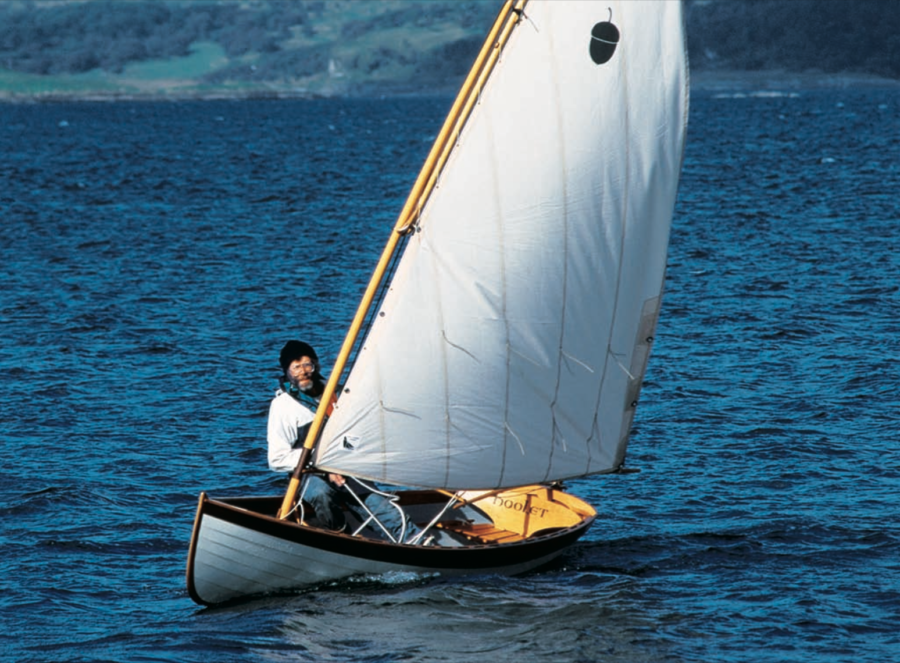
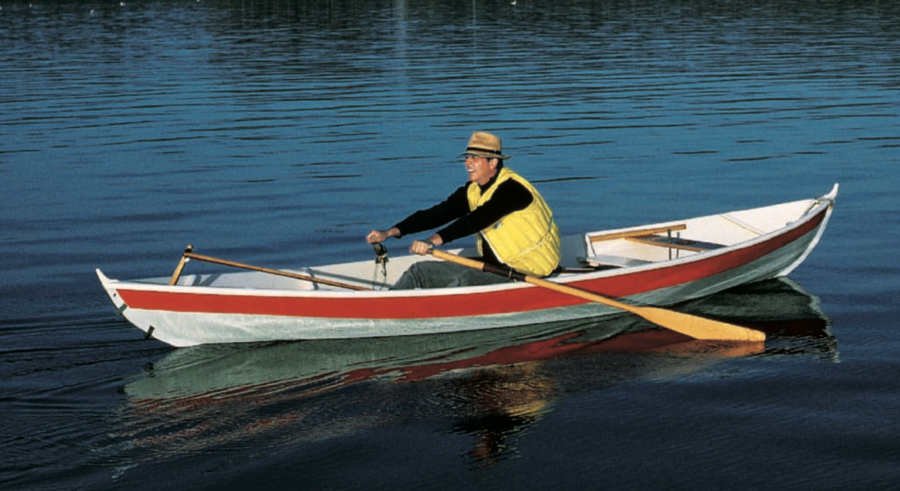
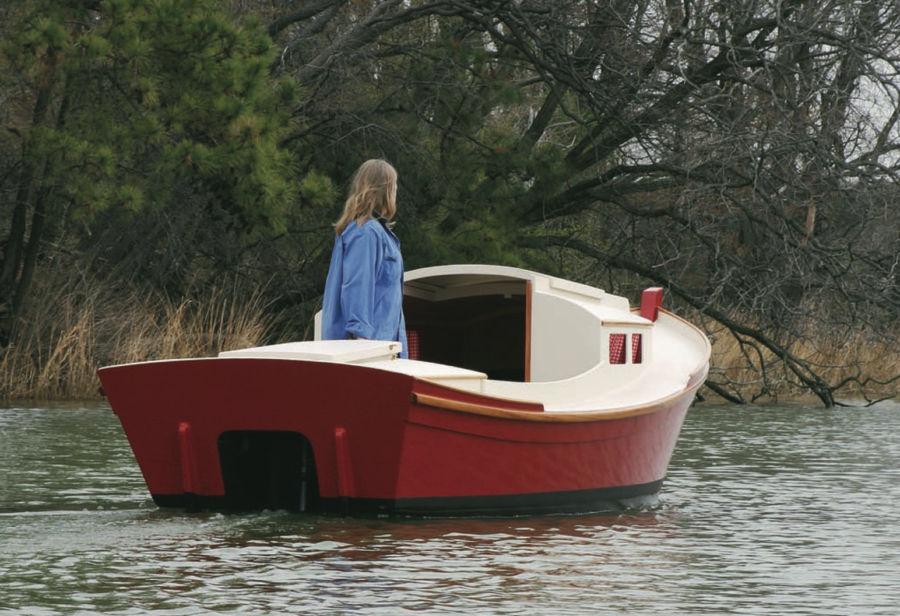
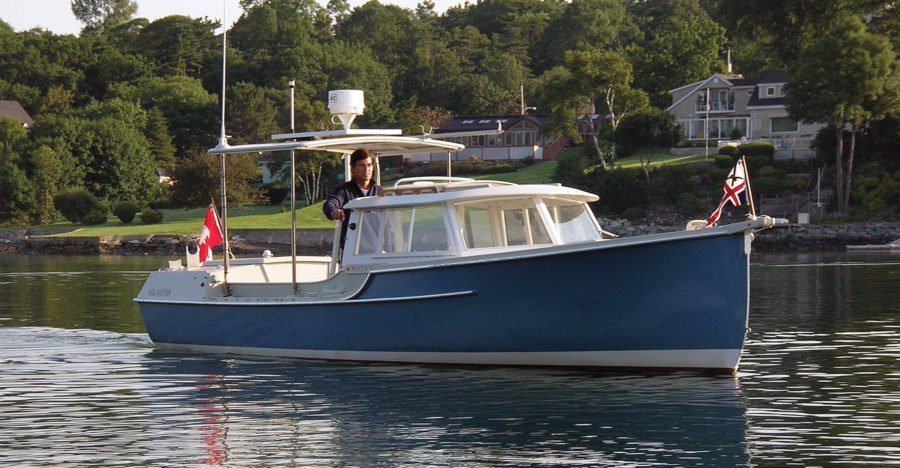
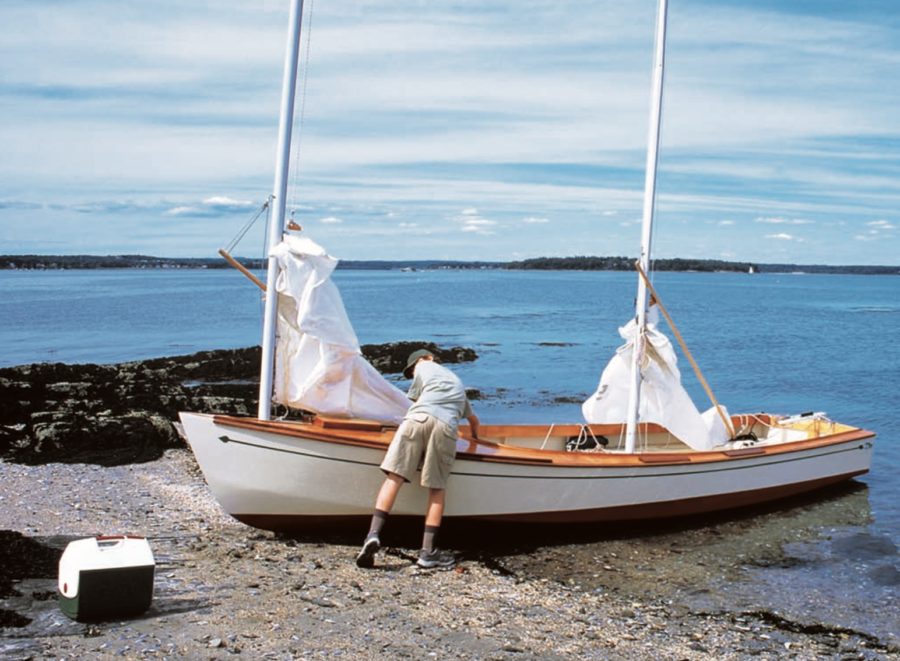
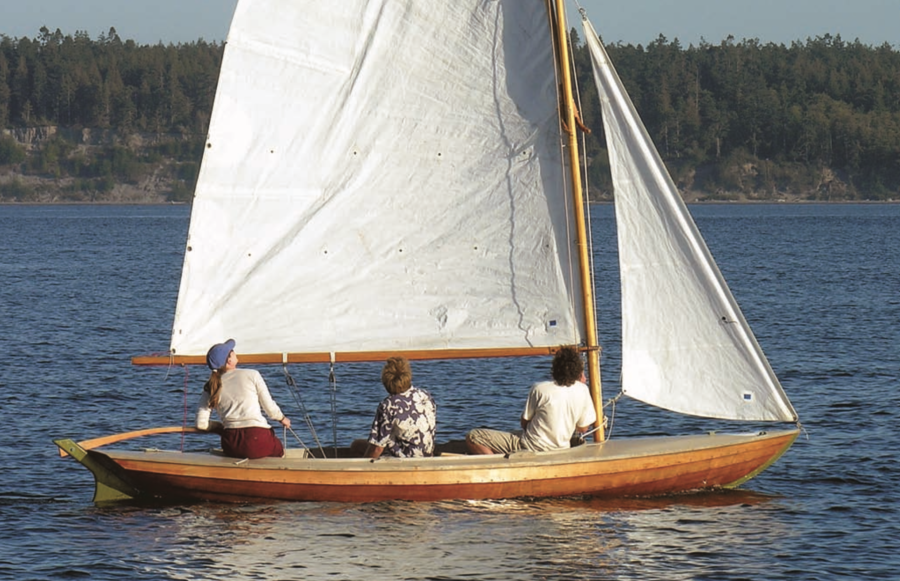
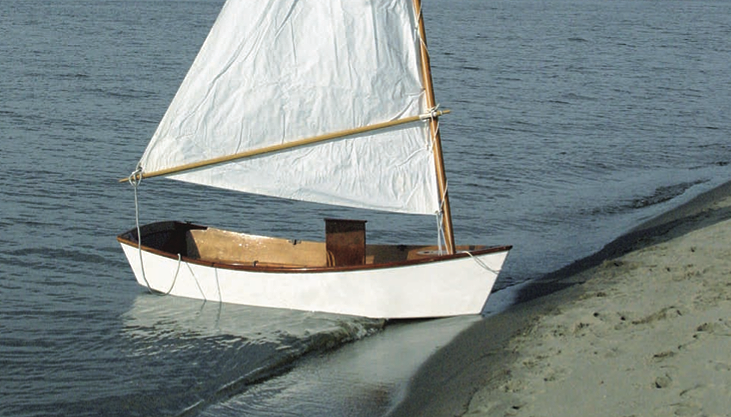
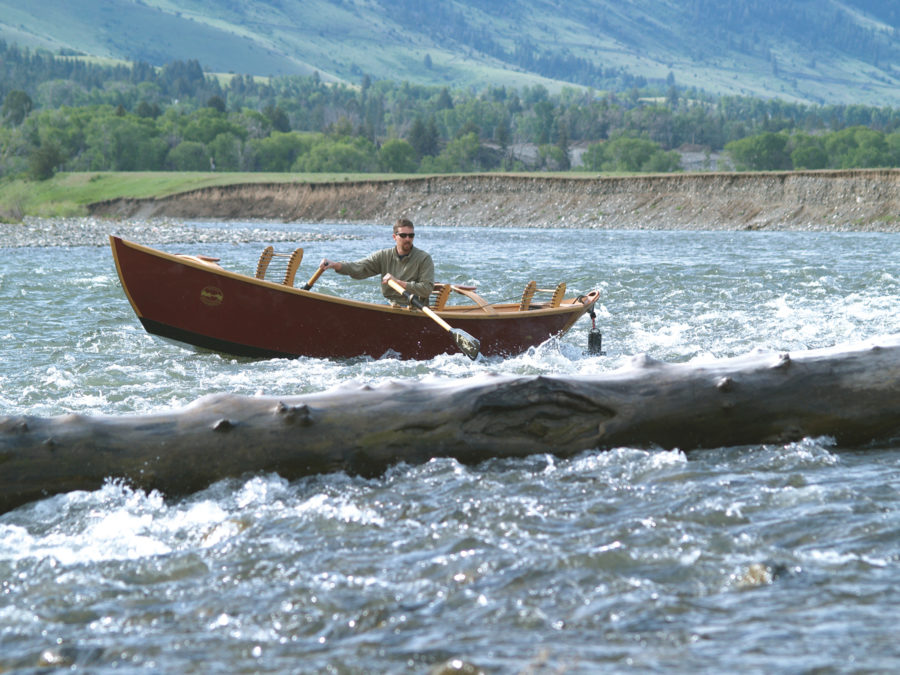
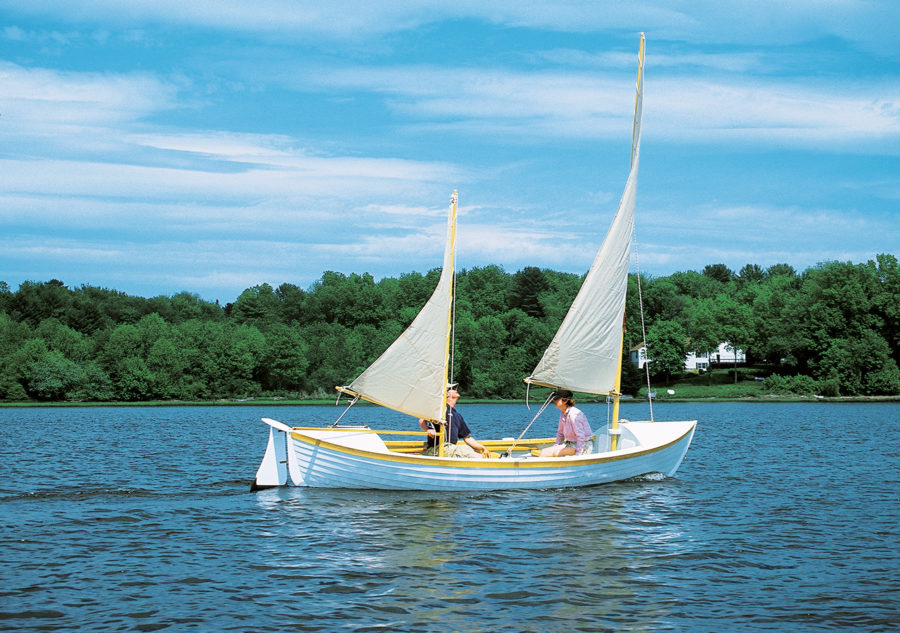
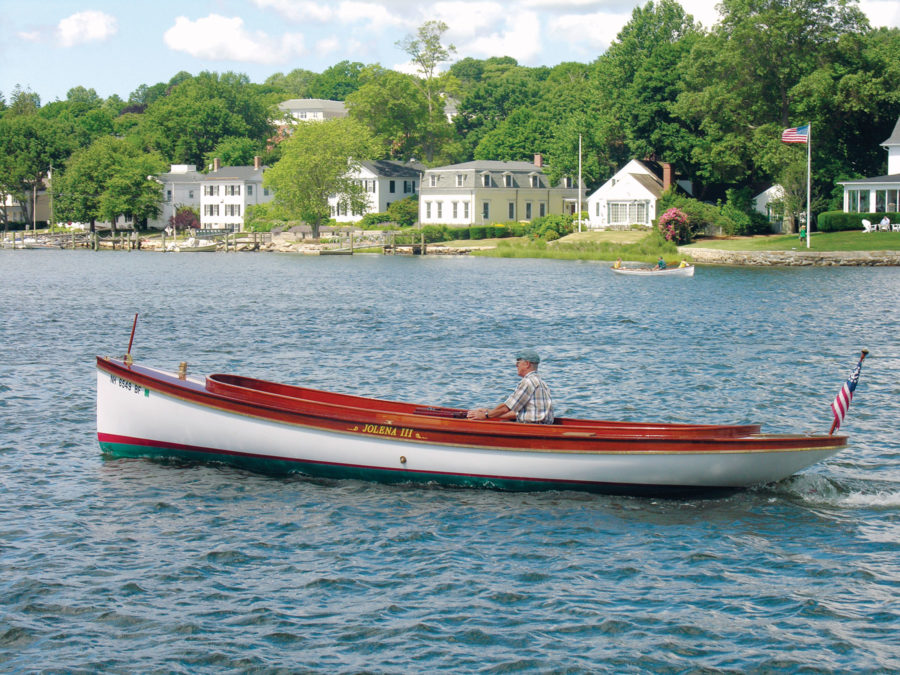
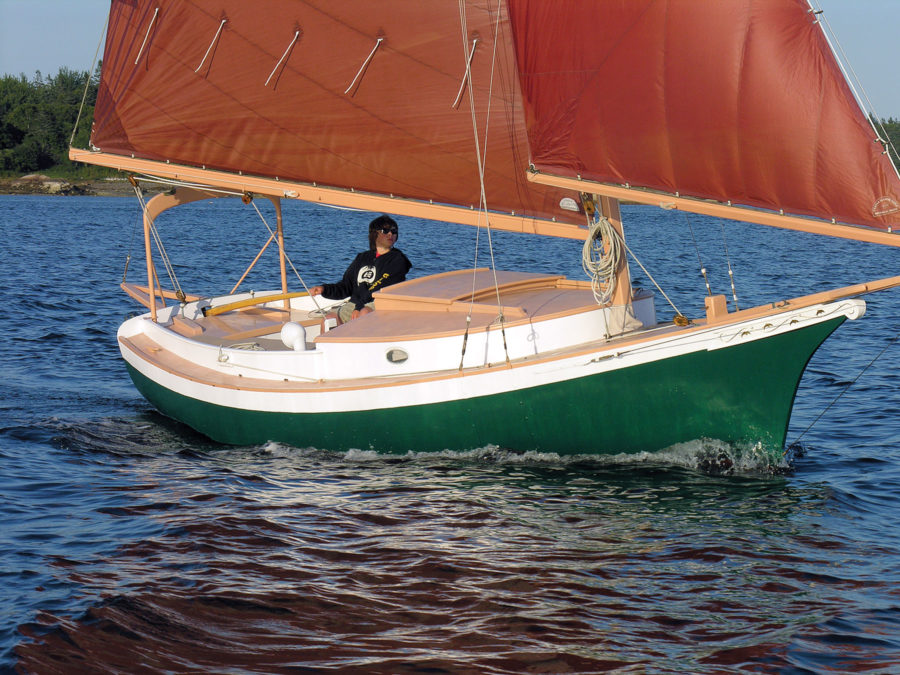
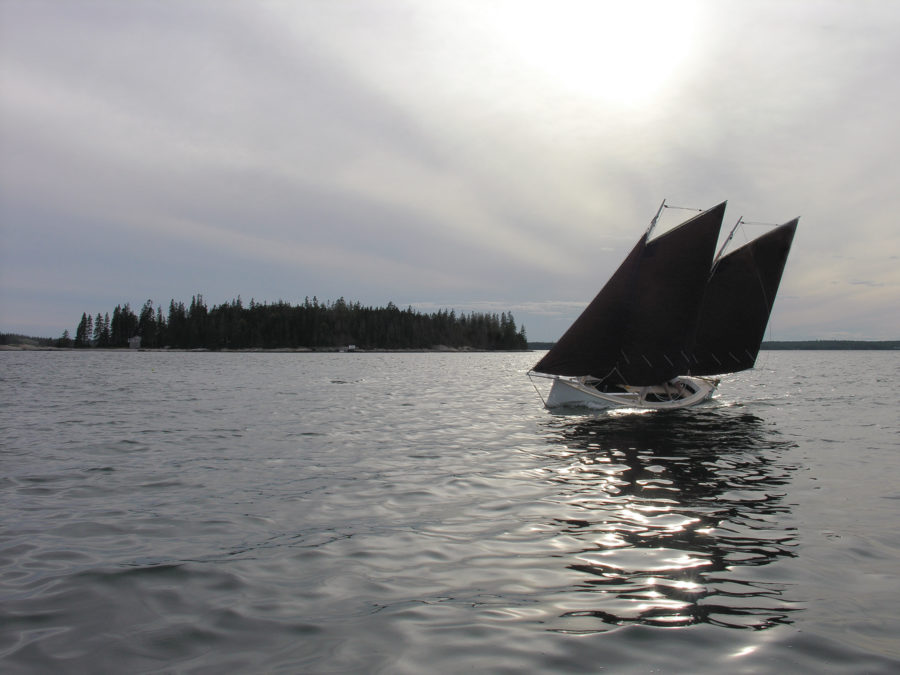
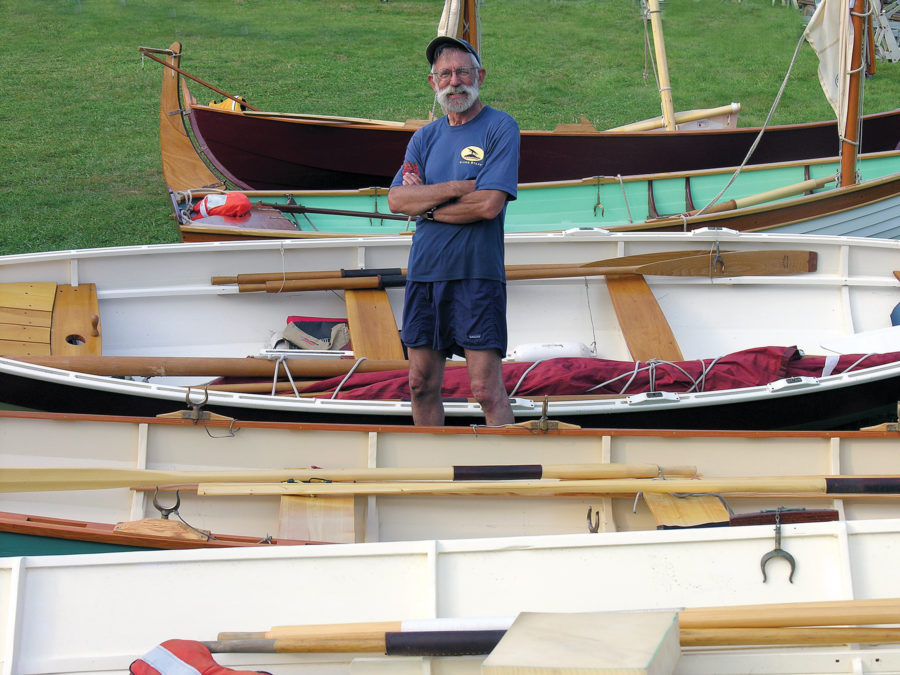
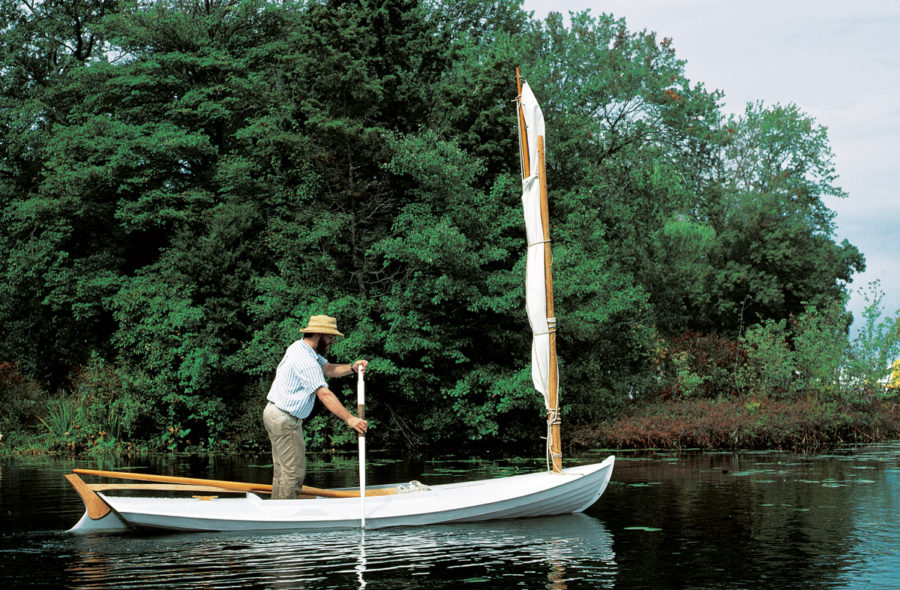
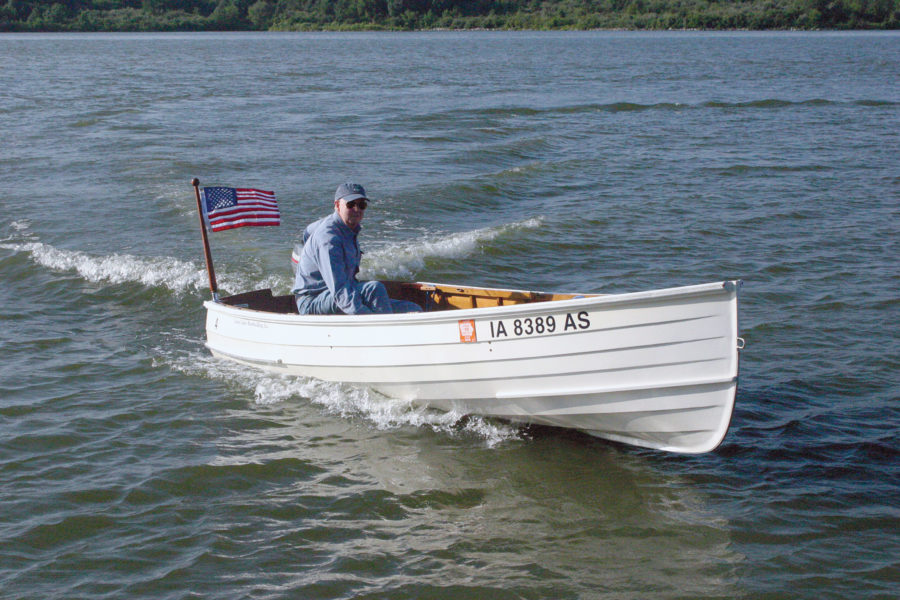
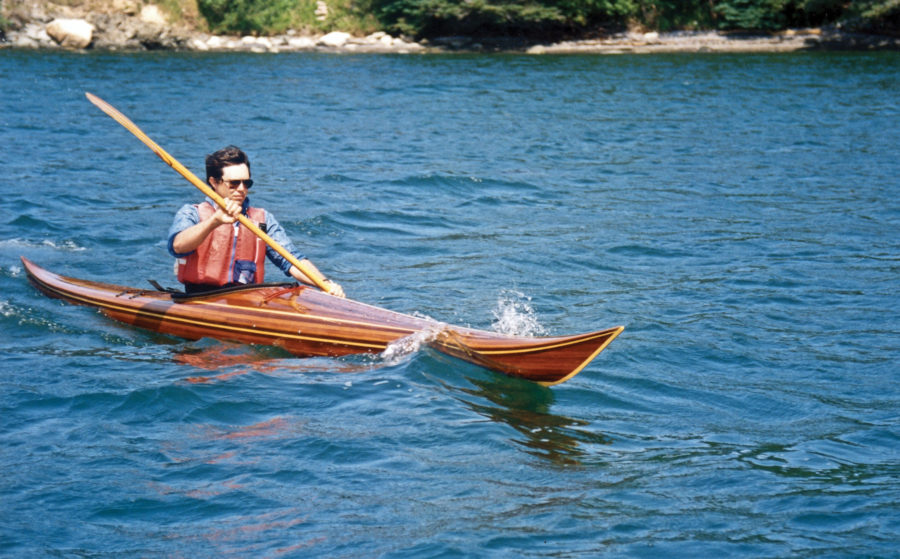
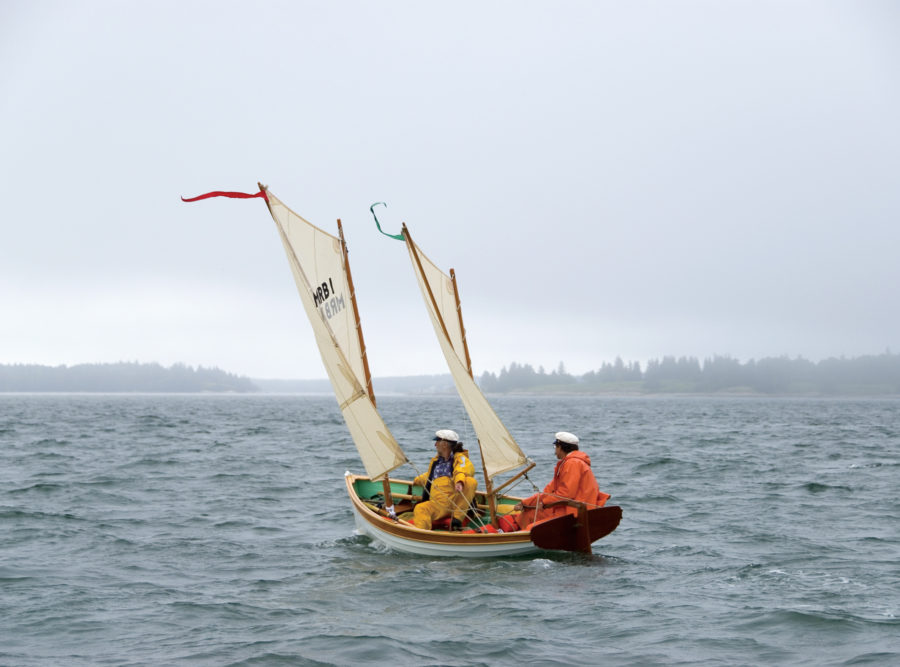
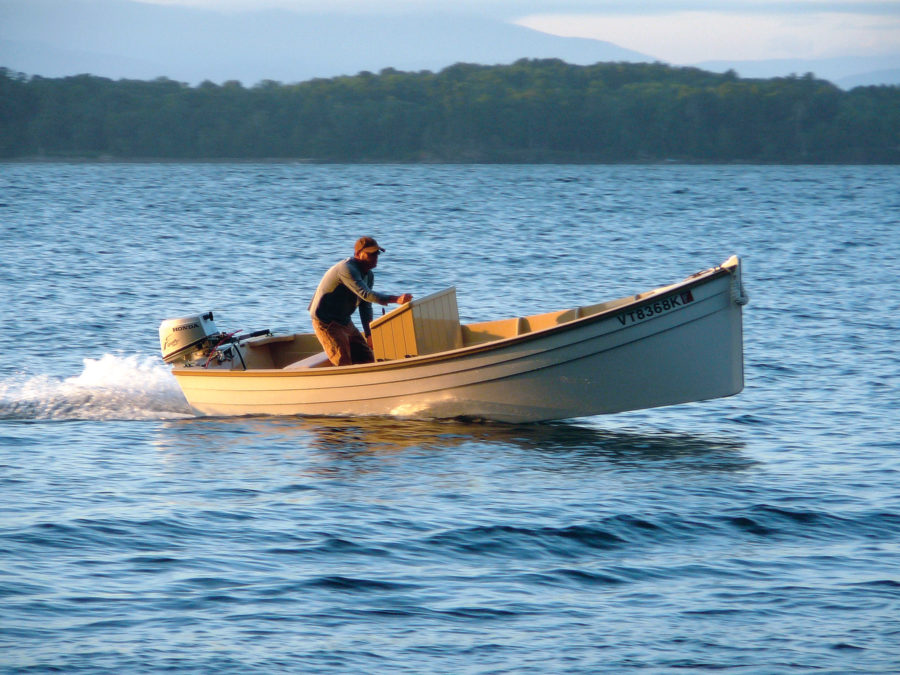
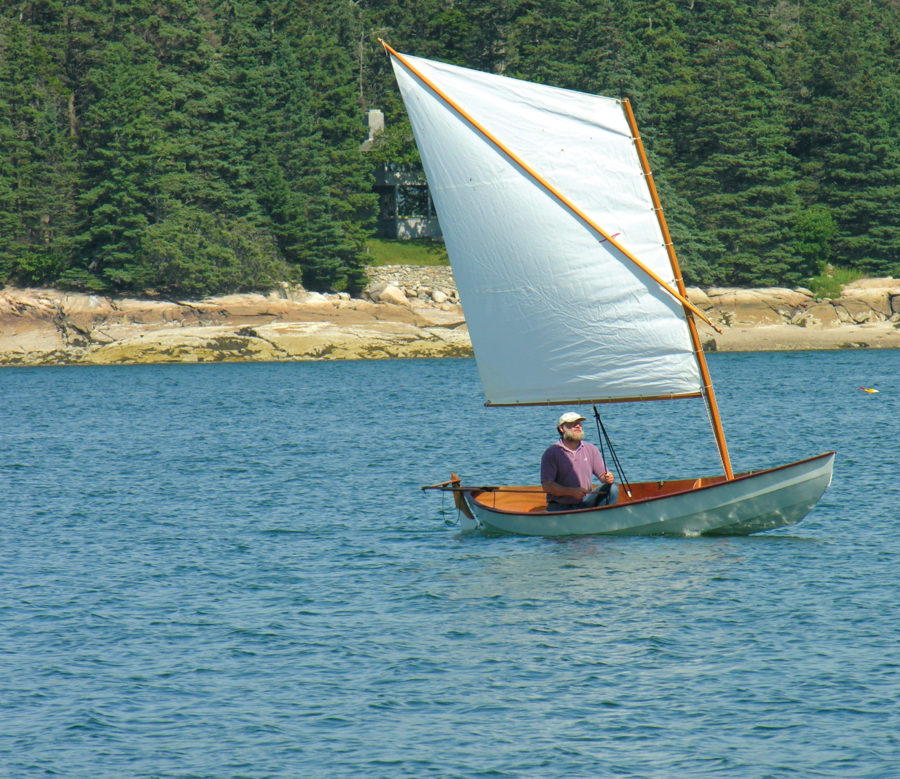

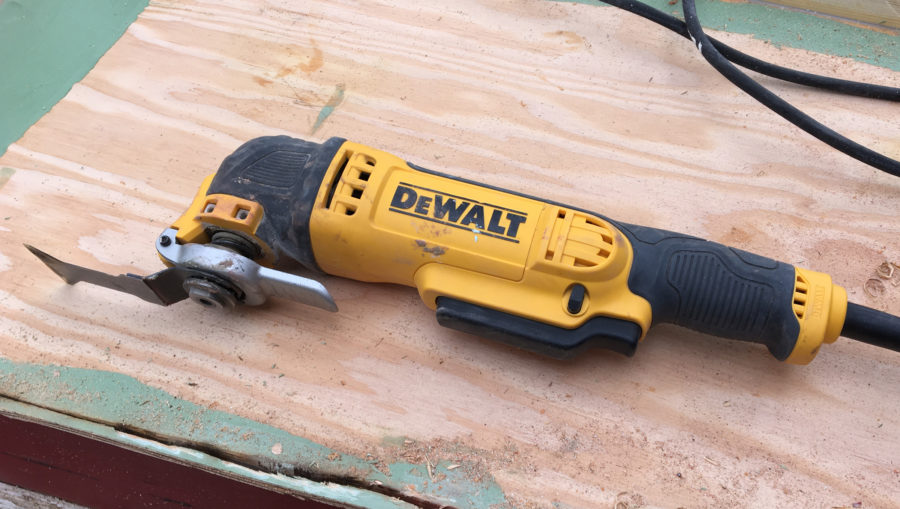

A pretty craft but, as sailed on this particular photo day, she could have had more foot tension on the mainsail. Lovely shape hull.